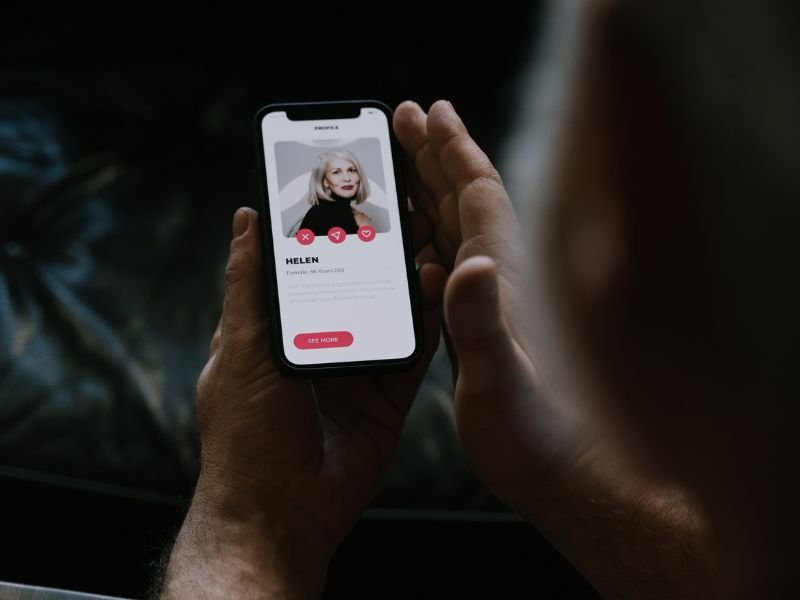The audio industry has undergone a transformative shift with the advent of artificial intelligence (AI), particularly in the realm of voice-over production. AI-powered voice-over apps are redefining how content creators, marketers, and filmmakers generate high-quality vocal narrations without the need for expensive studio sessions or professional voice actors. These applications leverage advanced machine learning algorithms, neural text-to-speech (TTS) systems, and natural language processing (NLP) to produce lifelike, expressive, and customizable voiceovers in multiple languages and accents. As demand for audio content surges across podcasts, e-learning, advertisements, and social media, AI voice-over tools are becoming indispensable for businesses and individuals alike.
The appeal of AI voice-over apps lies in their accessibility, cost-efficiency, and speed. Traditional voice-over production involves hiring talent, booking studio time, and undergoing lengthy editing processes—factors that can be prohibitive for small businesses or independent creators. In contrast, AI-driven solutions allow users to generate professional-grade voiceovers in minutes, with the flexibility to tweak tone, pitch, and pacing to suit their needs. From YouTube narrations to corporate training modules, these apps cater to a wide range of use cases, democratizing access to high-quality audio production.
However, as with any emerging technology, AI voice-over apps also raise questions about authenticity, ethical considerations, and the future of human voice actors. While these tools offer unparalleled convenience, they also challenge the traditional boundaries of creativity and labor in the audio industry. This article explores the capabilities, benefits, limitations, and prospects of AI-powered voice-over applications, shedding light on their growing influence in modern media production.
Understanding AI Voice Over Technology
AI voice-over technology is built on sophisticated neural networks that analyze and replicate human speech patterns. These systems are trained on vast datasets of recorded voices, enabling them to generate synthetic speech that mimics natural intonation, emotion, and rhythm. Modern TTS engines, such as those developed by companies like Google, IBM, and Amazon, utilize deep learning models to produce voices that are nearly indistinguishable from real human speakers. Some AI apps even offer “voice cloning,” where users can replicate a specific person’s voice with just a few samples.
One of the key advancements in AI voice-over technology is emotional expressiveness. Early text-to-speech systems often sounded robotic and monotonous, but newer models can convey happiness, sadness, urgency, or sarcasm based on contextual cues. This is particularly valuable for applications like audiobooks, animated films, and customer service bots, where vocal emotion enhances engagement. Additionally, multilingual support allows businesses to localize content effortlessly, breaking down language barriers in global markets.
Despite these advancements, challenges remain. AI-generated voices can sometimes struggle with complex pronunciations, unusual names, or highly technical jargon. Moreover, while the technology excels at short-form content, maintaining consistency and natural flow in longer narrations can still be a hurdle. Developers are continuously refining these systems, integrating user feedback and expanding voice libraries to address these limitations.
Top AI App For Voice Over in the Market
1. Murf.ai
- Features:
- 120+ realistic voices in 20+ languages
- Adjustable speech speed, pitch, and emphasis
- Video editing integration for content creators
- Best for: Marketing videos, e-learning, and multimedia projects
2. Lovo.ai

- Features:
- Proprietary “Genny” AI model for emotive speech
- Voice cloning capabilities
- 500+ natural-sounding voices
- Best for: Game developers, animators, and audiobook narration
3. Descript
- Features:
- Text-based audio/video editing (edit like a doc)
- AI voice synthesis + overdub functionality
- Podcast/voiceover studio tools
- Best for: Podcasters, journalists, and video editors
4. Amazon Polly

- Features:
- Lifelike neural TTS (60+ voices)
- API for developers
- Real-time streaming support
- Best for: App integrations and scalable enterprise solutions
5. Google Text-to-Speech

- Features:
- WaveNet voices with human-like intonation
- 220+ voices in 40+ languages
- Custom voice model training
- Best for: Android apps and cloud-based services
6. Resemble.ai
- Features:
- High-accuracy voice cloning
- Emotional tone controls (angry, sad, etc.)
- API for custom integrations
- Best for: Brand voice consistency and advertising
Applications of AI Voice Over in Various Industries
The versatility of AI voice-over technology has led to its adoption across multiple sectors. In e-learning, educators use AI narrations to create engaging course materials without the need for repeated recordings. Language learning platforms leverage multilingual voices to help students master pronunciation and intonation. Similarly, marketing and advertising agencies utilize AI voices for dynamic ad campaigns, enabling quick updates and localization without rehiring talent.
In entertainment, AI voice-over apps assist in dubbing films and TV shows, reducing production costs and time. Some studios even experiment with AI to recreate the voices of deceased actors for posthumous performances. Podcasting is another area where AI tools shine, allowing hosts to generate intros, outros, and sponsor messages effortlessly. Additionally, accessibility initiatives benefit from AI narrations, as text-to-speech technology helps visually impaired individuals consume written content more easily.
However, the rise of AI voices also sparks debates in creative industries. While some see it as a tool for efficiency, others worry about job displacement for human voice actors. Striking a balance between automation and human talent will be crucial as the technology evolves.
Ethical and Legal Considerations
The proliferation of AI voice-over apps brings forth important ethical and legal questions. Voice cloning, for example, raises concerns about consent and misuse. Imagine a scenario where someone’s voice is replicated to spread misinformation or commit fraud. Several jurisdictions are now exploring regulations to prevent such abuses, requiring explicit permission before a person’s voice can be synthesized.
Copyright issues also come into play—who owns the rights to an AI-generated voice? If a company creates a unique synthetic voice, can others replicate it without permission? These questions remain largely unresolved, prompting calls for clearer legal frameworks. Additionally, the potential for AI voices to replace human narrators entirely has led to pushback from voice actors’ unions, advocating for fair compensation and attribution in AI-assisted projects.
Transparency is another critical factor. Should content creators disclose when a voice-over is AI-generated? Listeners and viewers may feel deceived if they believe they’re hearing a real person when it’s a synthetic voice. Establishing ethical guidelines will be essential to maintaining trust in AI-generated audio content.
The Future of AI Voice Over Apps
The trajectory of AI voice-over technology points toward even more realistic and adaptive systems. Future iterations may incorporate real-time voice modulation, allowing live streamers and gamers to adopt different personas instantly. Advances in emotional AI could enable voices to respond dynamically to user input, making virtual assistants and chatbots more empathetic and engaging.
Another exciting frontier is interactive storytelling, where AI voices adjust narration based on audience reactions or choices, creating immersive experiences in gaming and virtual reality. Furthermore, as computational power increases, we may see fully AI-generated podcasts and radio shows, where hosts and interviews are synthesized without human involvement.
Yet, as AI continues to blur the line between human and machine-generated content, society will need to grapple with deeper philosophical questions about creativity, authenticity, and the value of human labor. While AI voice-over apps offer incredible convenience, the human touch—imperfections, spontaneity, and emotional depth—remains irreplaceable in many contexts.
Enhancing Creativity with AI Voice Over Apps
One of the most compelling aspects of AI voice-over technology is its ability to enhance creative workflows. Writers, filmmakers, and game developers can now experiment with different voices and styles without the logistical challenges of casting and recording sessions. For instance, an indie game developer can generate multiple character voices on-demand, adjusting accents and tones to fit their narrative. Similarly, authors can bring their audiobooks to life without hiring expensive narrators, making self-publishing more accessible than ever.
Moreover, AI voice-over apps allow for rapid prototyping in advertising and media production. Marketing teams can test different voice styles for commercials before finalizing a human actor, saving both time and resources. Animation studios can use AI-generated placeholder voices during pre-production, ensuring that dialogue flows naturally before committing to professional recordings. This flexibility accelerates the creative process, enabling faster iterations and more refined final products.
Despite these advantages, some argue that AI-generated voices lack the nuanced spontaneity of human performances. While AI can replicate emotion, it may struggle with subtle improvisations or the organic imperfections that make human voices unique. As a result, many professionals use AI as a supplementary tool rather than a full replacement—leveraging its efficiency while still relying on human talent for high-impact projects.
Customization and Personalization in AI Voice Overs
A major selling point of AI voice-over apps is their high degree of customization. Users can fine-tune parameters such as pitch, speed, and emphasis to create the perfect vocal delivery. Some platforms even allow for adjusting “breathiness” or “raspiness,” mimicking different speaking styles—from a smooth, corporate tone to a gritty, dramatic narration. This level of control ensures that the AI voice aligns perfectly with the intended mood and branding.
Personalization extends beyond just vocal characteristics. Many AI voice apps offer brand voice creation, where companies can develop a unique synthetic voice that becomes part of their identity. This is particularly useful for customer service bots, virtual assistants, and branded content, ensuring consistency across all interactions. For example, a financial institution might want a calm, authoritative AI voice for its automated helpline, while a children’s app may prefer a playful, energetic tone.
Additionally, AI voice technology is increasingly being used for personalized content experiences. Imagine an e-learning platform where students can choose their preferred narrator’s voice, or a fitness app that motivates users with a customized AI coach. Such applications enhance user engagement by making interactions feel more tailored and human-like.
Challenges and Limitations of AI Voice Over Technology
While AI voice-over apps offer numerous benefits, they are not without limitations. One persistent challenge is the “uncanny valley” effect, where synthetic voices sound almost human but still carry subtle robotic undertones, making them feel slightly off-putting. Although modern AI has significantly reduced this issue, certain complex emotional deliveries—such as sarcasm, irony, or deep sorrow—remain difficult to replicate convincingly.
Another limitation is language and dialect accuracy. While AI voices excel in widely spoken languages like English, Spanish, and Mandarin, they may struggle with regional accents, indigenous languages, or lesser-known dialects. Mispronunciations and unnatural intonations can break immersion, particularly in storytelling or customer-facing applications. Developers are working to expand linguistic diversity, but achieving true global coverage remains a work in progress.
Finally, computational requirements can be a barrier. High-quality AI voice generation often relies on cloud-based processing, meaning users need a stable internet connection for real-time rendering. Offline solutions exist but may sacrifice voice quality or responsiveness. As edge computing improves, we may see more powerful on-device AI voice synthesis, reducing dependency on cloud servers.
AI Voice Overs and the Future of Human Voice Actors
The rise of AI-generated voices has sparked concerns about the future of human voice actors. Some fear that widespread adoption of synthetic voices could reduce demand for professional narrators, particularly in commercial and corporate sectors where cost-efficiency is prioritized. However, industry experts suggest that AI is more likely to augment rather than replace human talent.
Many projects still require the depth, emotion, and authenticity that only a human voice can deliver—especially in high-stakes areas like film, theater, and premium advertising. Instead of eliminating jobs, AI may shift the role of voice actors toward creative direction and oversight. Professionals could focus on refining AI outputs, providing emotional coaching for synthetic voices, or lending their unique vocal signatures for exclusive, high-value projects.
Moreover, ethical AI usage policies are emerging to protect voice actors’ rights. Some companies now offer royalty-based compensation when AI clones a performer’s voice, ensuring fair payment for digital reproductions. Unions like SAG-AFTRA are also negotiating contracts that address AI’s role in the industry, advocating for transparency and consent in synthetic voice usage.
The Role of AI Voice Overs in Accessibility and Inclusion
Beyond commercial applications, AI voice-over technology plays a crucial role in accessibility and inclusion. For individuals with speech impairments or conditions like ALS (amyotrophic lateral sclerosis), AI-powered text-to-speech tools provide a voice when natural speech is difficult or impossible. Customizable synthetic voices allow users to maintain a personal vocal identity rather than relying on generic robotic tones.
In education, AI narrations help dyslexic students and those with reading difficulties by converting textbooks into spoken content. Similarly, multilingual AI voices assist non-native speakers in learning new languages with accurate pronunciation models. Public services, such as transportation announcements and emergency alerts, also benefit from AI-generated voices, ensuring clear and consistent communication across diverse populations.
As AI voice technology advances, its potential to bridge communication gaps will only grow—making digital content more inclusive and accessible to all.
Conclusion
AI voice-over apps have undeniably transformed the audio production landscape, offering speed, affordability, and versatility that were unimaginable just a decade ago. From marketing campaigns to e-learning modules, these tools empower creators to generate professional-grade voiceovers with minimal effort. As neural networks become more sophisticated, we can expect even more lifelike and emotionally expressive AI voices, further blurring the line between human and synthetic narration.
However, this rapid advancement also brings ethical dilemmas—consent in voice cloning, job displacement concerns, and the need for transparent AI usage policies. Striking the right balance between automation and human creativity will be essential to ensure that AI serves as a tool for enhancement rather than replacement. The voice-over industry must navigate these challenges thoughtfully, fostering collaboration between technologists and artists.
Ultimately, AI voice-over technology is not just about efficiency—it’s about expanding possibilities. Whether enabling independent creators, enhancing accessibility, or pushing the boundaries of interactive media, AI voices are reshaping how we communicate and tell stories. The future of voice-over lies in a harmonious integration of human talent and artificial intelligence, where both can thrive in complementary roles. As this technology evolves, one thing remains certain: the power of voice, whether human or synthetic, will continue to captivate and connect us in profound ways.






